
Privacy statement: Your privacy is very important to Us. Our company promises not to disclose your personal information to any external company with out your explicit permission.
The basic performance of current pure electric vehicles is still unable to catch up with gasoline vehicles in many places. However, powerful technologies supporting a new generation of pure electric vehicles are steadily growing, including rechargeable batteries that can travel longer distances and fuel cell technologies that can significantly reduce costs.
This article refers to the address: http://
“It will take another 2-3 years after FY2016” – at the 43rd Tokyo Motor Show 2013, Carlos Ghosn, President and CEO of Nissan Motors, adjusted the pure electric vehicle (EV) ) The popularization plan. According to Goeen's previous goal, Nissan and France's Renault will add up to 1.5 million vehicles before the 2016 fiscal year.
When it comes to the failure of the goal, Ghosn believes that the charging infrastructure is not perfect. But on the contrary, this also means that the current EV's driving distance does not meet the requirements. In other words, in order to make EV a fascinating product in the future, only the capacity of a car-mounted rechargeable battery that directly affects the driving distance can be removed (Fig. 1).
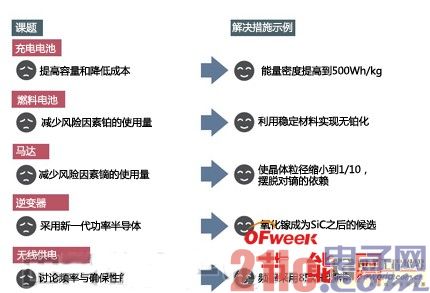
Figure 1: Pure electric vehicles rely on material innovation to overcome problems
Faced with many problems in pure electric vehicles, the dynamics of exploring fundamental solutions through improved materials are becoming more active. Wireless power is added to improve convenience by combining automatic parking technology.
The fuel cell vehicle (FCV), which is about to start mass production in 2015, faces the problem of cost and mass production. The biggest obstacle is the platinum (Pt) catalyst used in fuel cell stacks. How to reduce the amount of platinum used, or to achieve "no platinum" will become the focus of competition in vehicle development.
The main component of a pure electric vehicle, the drive motor, also presents a resource risk. In order to prevent the magnetic properties from weakening when the temperature rises, a rare earth crucible (Dy) is added to a neodymium-iron-boron (Nd-Fe-B) type sintered magnet (neodymium magnet) used for driving the motor. In order to avoid price spikes and resource risks, the pace of developing flawless motors is also accelerating. Nowadays, inverters are increasingly demanding for efficiency and miniaturization, and low-cost, low-loss, next-generation power semiconductors are expected.
The development of improving the convenience of pure electric vehicles is also advancing. Discussions on standardization are in full swing in the wireless power supply of wireless transmission of electrical energy. Nissan Motors has publicly announced that it will launch an EV equipped with wireless power supply in 2014 (Ghosn).
Rechargeable batteries: the core components of pure electric vehicles and fuel cell vehicles, the exploration of new materials continues
Although EV sales growth is less than expected, it is undoubted that in the future, with the strengthening of carbon dioxide emission standards, EV will become an important strategic model. A key to the popularity of EVs is the development of high energy density rechargeable batteries.
On the other hand, in order to meet the requirements of environmental standards, in addition to the development of EVs, the FCV that uses fuel cells instead of engines is also a direction. The FCV also needs to be equipped with a rechargeable battery. Depending on the performance of the rechargeable battery, the output power required by the fuel cell is also very different.
In this context, the global competition for rechargeable battery development is becoming increasingly fierce. The main line of development is to explore new materials available for lithium-ion rechargeable batteries (Figure 2). One unit of the current EV lithium ion rechargeable battery has an energy density of 60 to 140 Wh/kg. Small EVs can only travel about 160 kilometers in one charge. Therefore, the EV first needs to increase the energy density of the battery unit to about 250 Wh/kg, so that the driving distance of one charging reaches about 300 kilometers.
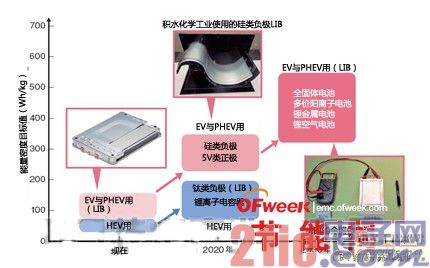
Figure 2: The popularity of pure electric vehicles must rely on a leap in battery performance
The energy density of lithium-ion rechargeable batteries used in EVs and PHEVs will strive to reach 250Wh/kg by 2020 and 500Wh/kg by 2030, achieving full popularity.
In order to increase the capacity, silicon (Si)-based anode materials are about to be put into practical use in the automotive field. In theory, silicon can achieve a capacity that is about 10 times that of currently used graphite materials. However, the expansion and contraction of silicon during charging and discharging is too large, and there is a difficulty in terms of life.
As a material which improves the problems of expansion and contraction while increasing the capacity, a silicon-based oxide such as silicon monoxide (SiO) has become a focus of attention. For example, Osaka Titanium Technologies has introduced silicon oxide with an amorphous structure. The siloxane produced by the company has a negative electrode capacity of 1700 to 1800 mAh/g, which is about 5 times that of graphite.
The Sekisui Chemical Industry has also confirmed that an energy density of about 340 Wh/kg can be achieved by utilizing self-developed silicon-based oxides. It is characterized by the use of a gel electrolyte having an ionic conductivity comparable to that of an electrolyte, without the need to inject an electrolyte, and the entire unit can be manufactured in a single coating process.
The Sekisui Chemical Industry will supply samples from the summer of 2014 and will be commercialized for consumer use in 2015. In-vehicle use requires cumbersome steps such as material certification and application review, and commercialization will have to wait until around 2018.
Strive to reach 500Wh/kg
There is also a view that if EV wants to catch up with the current gasoline vehicle and make the driving distance reach more than 500 kilometers, it can truly enter the EV era. At this time, the energy density of the battery unit should be increased to 500Wh/kg or more. This requires a new battery construction. For example, large-capacity electrode materials such as lithium metal (Li) and sulfur (S) have been sought, but conventional electrolytes have many problems. Therefore, an all-solid battery using a solid electrolyte has become a focus of attention.
In basic research, a multivalent cation battery using magnesium (Mg), aluminum (Al), or calcium (Ca) having two electrons is more active than monovalent lithium ions having only one electron activity. In addition, these metal materials are abundant in reserves. Unlike lithium batteries, the development of sodium-ion rechargeable batteries that can use iron-based cathode materials is also hot.
Fuel cell: can not be popularized without deplating, focusing on stable oxide catalyst
“The hydrogen filled for 3 minutes can travel more than 500 kilometers. It achieves the same ease of use as a gasoline car” – said Tian Zhongyi, who is responsible for the development of FCV in Toyota (the ZF main inspection of the company's product planning department). In front of him is the concept car "TOYOTA FCV CONCEPT" which was first launched by the company at the "43th Tokyo Motor Show 2013".
But there is a decisive difference between this car and the gasoline car. That is the price. Most of the opinions are that Toyota's vehicle price launched in 2015 will be "more than 5 million yen".
One of the reasons for the high cost is the platinum catalyst used in the fuel cell stack. By 2015, one FCV is estimated to use 50 to 100 g of platinum. By the time when the FCV officially entered the popular period of "before and after 2025" (Honda executives), auto companies must significantly reduce the amount of platinum used.
Not only cost, but also from the perspective of risk management, it is also necessary to reduce the amount of platinum used. Because the platinum reserves are 90% in South Africa (Figure 3), the platinum content of South African ore is decreasing year by year.

Figure 3: Platinum reserves concentrated in South Africa
According to the survey data, about 70% of the annual supply of platinum comes from South Africa. 90% of global reserves are located in South Africa.
In the study of reducing the amount of platinum used in fuel cells, the development of "core-shell catalysts" which are alloyed with other metals to increase the activity of platinum catalysts and use platinum-coated noble metals and base metals have progressed remarkably. However, in order to solve the problem fundamentally, "only the 'de-platinum' can be taken away" (Director of the Green Hydrogen Research Center of the Graduate School of Engineering, Yokohama National University, Kenji Ota).
The PEFC (solid polymer fuel cell) equipped with FCV is operated at a low temperature lower than 100 ° C, and the reaction speed is very slow. Therefore, it is necessary to use a platinum catalyst to promote an oxygen reduction reaction (ORR). Past research has always focused on finding materials with large ORR activity.
But Ota's research team switched its guidelines and began looking for materials with high chemical stability. After unremitting exploration, they found that the transition metal oxides in the fourth and fifth cycles were highly stable (Figure 4). The solubility of lanthanum oxynitride (TaON) and zirconium oxynitride (ZrON) in an acidic electrolyte is less than one-tenth of that of platinum, and the ORR activity does not change after long-term immersion.
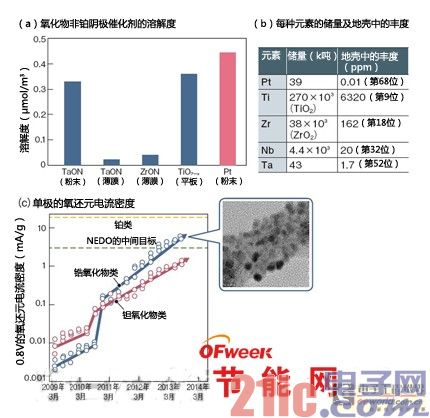
Figure 4: Looking for stability information
Ota and others from the National University of Yokohama in Japan turned their attention to materials (a) that are more stable than platinum. The reserves of candidate materials are all larger than platinum (b). The current density of the produced oxide catalyst was increased by 1000 times (c) in four years.
The latest results show that the zirconium oxide catalyst (Zr-CNO(Pc)) has high ORR activity (Fig. 4(c)). This catalyst uses ZrOPc as a starting material and uses multi-walled carbon nanotubes (MWCNTs) while satisfying the roles of the conductor and the carrier.
The current current density is "about 1/10 to 1/50 of platinum" (Ota). However, "there are currently many ways to increase the ORR activity of oxide catalysts such as zirconium and hafnium" (Ota). The research team will strive to provide samples from 2017 and apply them to FCV around 2025.
Daihatsu develops liquid fuel
In the general view that PEFC will become the mainstream of FCV fuel cells, Daihatsu has put forward different views. The company believes that "liquid fuel is the best choice considering ease of use." At the 2013 Tokyo Motor Show, the concept car "FC convex DECK" was exhibited (Fig. 5). The car replenished the liquid fuel by replacing the fuel bottle. The fuels envisaged are hydrazine hydrate and diaminourea.

Figure 5: Improving liquid fuel
Daihatsu's FCV concept car "FC convex DECK" was first revealed at the "43th Tokyo Motor Show 2013". The use of liquid fuels that do not require precious metals is the biggest feature.
Diaminourea is not toxic and is easier to store and use than hydrazine hydrate. However, the output power is low, so the current development is two fuels in parallel. Since the electrolyte membrane uses an anion exchange membrane, the catalyst can be made of nickel and iron.
Motor: Innocent to solve resource problems and high performance
Like a fuel cell, the motor is also resource risk. This is because the magnets of the left and right motor performance use a large amount of rare earth. A neodymium magnet that is indispensable for a motor of a pure electric vehicle contains a rare earth lanthanum (Dy) having a weight ratio of about 8%.
The neodymium magnet is used to maintain a high coercive force at a high temperature of 170 to 200 °C. However, not only is the output mainly concentrated in China, but it also affects the performance of the magnet. "The use of sputum will make the magnet work at the maximum value of the external work, that is, the maximum energy density is greatly reduced." Therefore, if it can be manufactured, "The use of yttrium," said Nigano Kazuo, head of the magnetic materials group at the Japan Institute of Materials Research (NIMS). The flawless magnets, resources and performance can be solved.
The development of flawless magnets has become increasingly active, and Showa Denko has been in mass production for FA at the end of November 2013. Its performance is comparable to that of a neodymium magnet with a 4% twist.
The coercive force of the neodymium magnet increases with the refinement of the crystal grain size (Fig. 6). In cooperation with Toyota, Baoye and others are working on the development of neodymium magnets with a crystal grain size of less than 1 μm. Now, the coercive force of a sample having a crystal grain size of 0.2 μ to 0.3 μm reaches about 2T. "The realization of 2.5 to 3T that meets the needs of pure electric vehicles has entered the field of vision" (Baoye). In this study, the reduction in crystal size was done by thermal processing. The treatment was assisted by Datong Electronics.

Figure 6: Reducing the crystal grain size and increasing the coercivity without relying on ruthenium
The neodymium magnet has a tendency that the smaller the crystal grain size, the easier it is to increase the coercive force. Thermal processing is an effective method for making the crystal grain size less than 1 μm. (Photo: Nikkei Electronics, based on data from the Japan Materials Research Institute)
In addition, motor development has also seen the trend of opening new structures. Chi Jinguan, an associate professor of electrical engineering at the Electrical and Electronics Group of the Faculty of Engineering, Shibaura Institute of Technology, is developing a motor that uses GMR (giant magnetoresistance) components instead of coils (Figure 7).

Figure 7: Manufacturing a spintronic motor using GMR components
Akasawa of the Shibaura University of Technology proposed a scheme for manufacturing a spintronic motor using GMR components. The goal is to replace the stator with a GMR component to increase torque density. (Photo: Nikkei Electronics is based on data from Shibaura Institute of Technology)
The GMR component can control the magnetization direction with current. The use of the GMR element as the stator of the motor has been the appearance of a "spintronic motor" using a permanent magnet as the rotor.
Conventional stators in which the core is coiled will have a reduced torque due to copper loss of the copper wire. The use of GMR components eliminates copper losses and enables high torque motors. The motor is still in the work verification stage, “first of all, we will strive to put it into practical use in small products such as medical devices” (Akazu).
Inverter: Gallium oxide instead of silicon carbide, strive to supply samples in 2020
The function of the inverter is to convert the electric energy stored in the large-capacity rechargeable battery from direct current to alternating current to drive the motor to run. With the evolution of rechargeable batteries and motors, the development of next-generation inverters is also being carried out simultaneously.
The key to miniaturization and high performance of inverters is in the hands of power semiconductors. In pure electric vehicle applications, a new generation of power semiconductor silicon carbide (SiC) is recognized as the mainstream. According to Roma's speculation, the inverter that drives the motor "will be equipped with silicon carbide from 2016 to 2017." Competitors developing silicon carbide are also working hard for each other in the late 2010s.
“There is a material that has the potential to go beyond silicon carbide” – the research team of Japan’s ICT Research Institute (NICT)’s Toki Masahiro (Director of the Center for Advanced ICT Device Development at the NICT Future ICT Institute) has focused on gallium oxide. (Ga2O3). Because gallium oxide can produce a power semiconductor with high withstand voltage and low loss at a low cost compared with silicon carbide and gallium nitride (GaN).
Gallium oxide has a variety of crystal structures, and the β type is the most stable. The band gap of β-type gallium oxide is as high as 4.8 to 4.9 eV. It is more than 4 times that of silicon, even higher than 3.3eV of silicon carbide and 3.4eV of gallium nitride (Fig. 8). Moreover, the "Baliga Value Index" of the low loss performance of the left and right power semiconductor performance is about 10 times that of silicon carbide and 4 times that of gallium nitride.
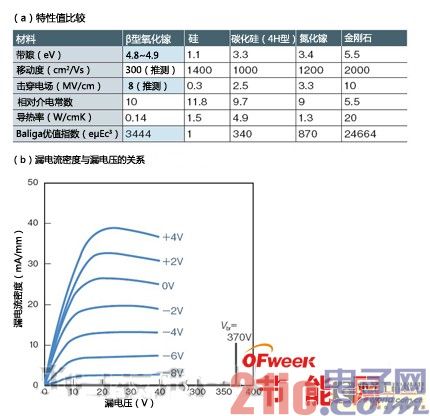
Figure 8: Trial MOSFET with gallium oxide
Research groups such as information and communication research institutes are developing a new generation of power semiconductors using beta-type gallium oxide (a). The operation of the depletion MOSFET using this material was confirmed (b).
Dongwife et al. have already prototyped a beta semiconductor FET (Metal Semiconductor Field Effect Transistor) in 2012 and confirmed the work. This time, the material was used to prototype a depletion MOSFET. The withstand voltage of the prototype was 370 V, and the maximum leakage current density was 39 mA/mm when the gate voltage of 4 V was applied. The leakage current switching ratio is about 107 at 100 ° C, and maintains a level of about 104 at a high temperature of 250 ° C. The practical level of leakage current switching ratio is 106 to 107 up and down.
In order to promote the development of gallium oxide, NICT established the "Green ICT Device Advanced Development Center" on December 1, 2013. As the director of the East threat, he said, "We will supply gallium oxide power semiconductor samples from 2020 and will be put into mass production by 2025."
Wireless power supply: the standard will be released as soon as possible in 2014, the frequency will drop 85kHz
Wireless power supply for pure electric vehicles is a big step toward practical use. In November 2013, the Society of Automotive Engineers (SAE) announced that pure electric vehicles will be powered by the 85 kHz band (81.38k to 90.00kHz) (Figure 9).
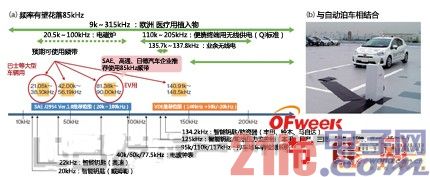
Figure 9: Beginning to improve the environment for practical use
In the case of wireless power supply for automobiles, the scheme using the 85 kHz band is expected to be the largest (a). By combining automatic parking, the problem of misalignment of the transmitting and receiving coils can be solved. The photo is an automatic parking demonstration of Denso (b). (Photo: (a) for Nikkei Electronics based on data from Waseda University)
SAE is scheduled to release the standard "SAE J2954" for wireless power supply from 2014 to 2015. The 85 kHz band introduced this time is a frequency band advocated by Japanese and German auto companies and Qualcomm. According to the current policy, SAEJ2954 will integrate four standards with a maximum output power of 3.7 kW (general household), 7.7 kW (public), 22 kW (fast charging), and 200 kW (large car).
In actual use, "should be able to choose the appropriate output power according to the way of use" (a wireless power supply industry). If you are slowly charging at home for 8 hours at night, just choose 3.7 kW. If you need to charge quickly when you are out, you can choose to support a 22 kW wireless power supply system.
In order to cope with such a trend, companies such as Qualcomm have prepared similar systems for a variety of output methods.
The technical problem that has always been solved - the problem of misalignment of the power supply coil and the power receiving coil can be solved by combining automatic parking technology. It is also an effective way to improve the construction of the power supply and the power receiving coil. A square coil called a solenoid has a large amount of misalignment in the horizontal direction. Currently, Sumitomo Electric Industries and Technova are developing solenoids.
Discussions on the future of wireless power supply while driving are also underway. The "OLEV" being developed by the Korea Institute of Science and Technology (KAIST) is leading the way. However, the power transmission efficiency of the power supply during driving is only about 65%. It relies mainly on static wireless power with an efficiency of 80%. It can be seen that when discussing wireless power supply, it is necessary to consider setting a dedicated lane for charging.
July 18, 2024
July 17, 2024
Enviar e-mail para este fornecedor
July 18, 2024
July 17, 2024

Privacy statement: Your privacy is very important to Us. Our company promises not to disclose your personal information to any external company with out your explicit permission.

Fill in more information so that we can get in touch with you faster
Privacy statement: Your privacy is very important to Us. Our company promises not to disclose your personal information to any external company with out your explicit permission.